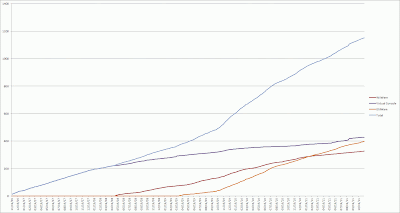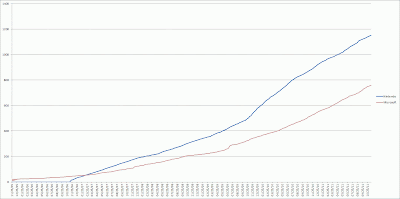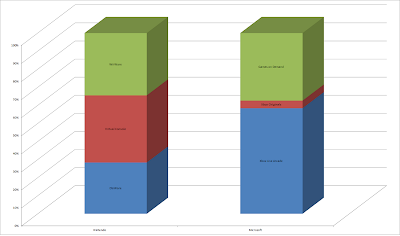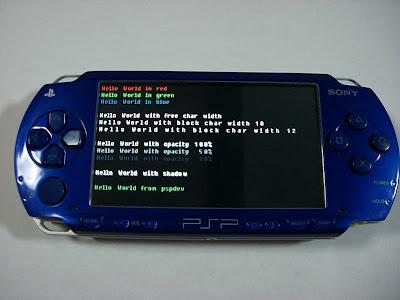As the seventh generation began winding down, everyone had high hopes. The Wii had smashed even its enthusiastic expectations, bolstered by a generous library of classics. Microsoft cemented its place as a major player, with successful franchises and the continuing expansion of Xbox Live. The PlayStation 3 managed to pick itself up and race to a close third. Overall, the three together managed to eclipse the sales of their combined predecessors, and as the eighth (and current) generation loomed on the horizon, everyone was riding high waves of success and victory (and income). Those waves have since crashed on the rocky shores of a new land, and those who thought they would stick a perfect landing have had something of a rude awakening.
Tag: sony
vita excrucio
I’m now convinced that Sony is determined to come up with the most sadistic way to store data possible, and see if people still buy it. It’s like they’ve created their own tech-centric version of Opus Dei that drives its followers to inflict suffering upon themselves in some futile chase to gain the approval of God.
Let’s look at Sony’s recent history of storage formats, shall we?
Start in 1975, with their Betamax casette. While a significant jump of quality over the competing VHS, Beta had two major drawbacks. The first was limited capacity, a logical expense for the tape’s higher resolution (roughly 50% greater than VHS). The second was much more detrimental–Sony’s jealous and suffocating guarding of the Betamax technology. Few outsiders were allowed licenses to produce the casettes and players/recorders, hindering the supply of releases and increasing the cost. Beta died a slow, lingering, and unsurprising death at the hands of the much more widely available VHS.
In 1992, Sony decided to take another swipe at a format completely under their control, and the MiniDisc hit the market, an attempt to combine the best attributes of magnetic and disc media. Sony again failed to open the technology to consumers, producing only a handful of MiniDisc read/write drives (not counting the MiniDisc players themselves, some of which could be used to write data to cartridges). While it was (sort of) a hit in Japan, MiniDisc failed to gain any traction in America or Europe.
Skip ahead another decade, and Sony’s introduction of the Universal Media Disc to coincide with its PSP system. While it had promise with its high capacity of 1.8GB, Sony again closed off avenues of production, amid piracy concerns. Intent on making a portable disc-based gaming system, they designed it with a very similar physical format to the MiniDisc, encasing the actual disc in protective plastic that turned out to be rather flimsy and unenduring. Once again, Sony’s attempt to stifle piracy failed, as it was relatively easy to use a PSP as a reader connected to a computer and directly rip images of games off the UMDs themselves.
Meanwhile, the Memory Stick was pushed to market in 1998, for use in Sony’s digital cameras and the (late) Clié PDA. While a formidable technology in terms of performance, once again Sony stifled production in the name of control and the Memory Stick was limited almost entirely to use in Sony’s products alone.
The company managed to change their fortunes with the breakout Blu-ray technology. Designed as a successor to DVDs, Blu-ray competed directly with the lower-capacity, but cheaper, HD DVD. This time, Sony did not fully control the format, working to design and implement it with over a dozen major manufacturers to give it a boost in market penetration. Beyond high-definition movies and mass storage, however, Blu-ray has seen little innovation.
Now Sony is preparing to paint themselves into a new corner with the looming Vita. The new handheld will make use of a proprietary memory format and a new storage format for the games themselves. Sony has already ommented that memory use will be highly compartmentalized–games that run on internal memory will not have access to external memory, and vice versa. Furthermore, the use of yet another controlled format will only drive the market up–it has already been announced that 32GB will cost $120, as opposed to a same-capacity microSD card which costs a third that; for a more fair comparison, look at 32GB Memory Stick Pro Duos, which are in the $80-90 range. This is not going to persuade many people to buy memory at such a high cost. Sony’s fear of piracy is understandable, but they could have saved consumers, and themselves, untold costs if they had simply went with an established memory format instead of designing and implementing their own. We have yet to see how this one holds up, but I’m not holding my breath.
past masters
I like to think of myself as having been a Nintendo fanboy since at least 1991, and I still prefer my Nintendo consoles to my others, for various reasons. But what’s been bugging me lately is their library. Not their new releases, which we all know are somewhat limited. No, it’s their overall library on the Wii and 3/DS/i that I’m talking about, specifically the digitally-distributed sort.
Nintendo started off the Wii launch with its most promising venture–its entire collection of previously-released games. The Virtual Console, paired with the Wii Shop Channel, opened the door for classics of all shapes and sizes to pour through the floodgates, bringing a wave of nostalgia to longtime fans–and bringing some dejected oldies to the attention of a new generation of players.
But as of right now those floodgates remain in a rather unfortunate state. Of late I’ve noticed a distinct lack of new releases on either the Wii Shop Channel or the eShop on the 3/DSi. Okay, I noticed it several months ago, but this time I decided to run some numbers. They don’t make for a great outlook.
 |
| Total Nintendo Download Releases. |
At present, 392 games are available on the Wii’s Virtual Console service. This amounts to roughly 3 new games every two weeks since the first games were pushed out on November 19, 2006. This doesn’t seem so bad in the end–400 games is a lot to choose from. But this is paltry compared to the vast libraries Nintendo has built in the past three decades. Just counting the NES, SNES, and N64, about 1,958 games have been released over the (many) years, depending on where you get your list. This number is highly debatable, and it is impossible to build a comprehensive list of all releases, so I will round down to 1,900 to be safe. Out of this number, Nintendo has tapped a mere 20% of the product pool, as it were. But that’s not the entire library, either. Games for the Master, Genesis, TurboGrafx, Neo Geo, Commodore 64, and arcade machines have also been made available. While it is impossible to account for all games released on the last two platforms, all the other systems total a count of nearly 3,500 games. This reduces VC’s library to a mere 11% of its total potential.
The Virtual Console has also been made available on the 3DS Shop. Game Boy, Game Boy Color, and NES games have been pushed to the platform, but so far less than fifty titles are available. The GB and GBC alone open the possibility for over 1,100 games. I’m hoping they see more potential in it than they have previously.
Moreso than this, Nintendo has neglected some of the aforementioned systems on the 3DS Shop. The Master, Genesis, and SNES would work beautifully on the 3DS–in fact, I would be far more likely to play SNES games on the 3DS, because I’m not keen on using the Classic Controller with my Wiimote. Interestingly, the Virtual Boy could also be implemented on the 3DS, making use of the true 3D screen, and possibly even with full-color graphics. This is something I would like to see Nintendo do (but that’s a very long list).
 |
| Note: This chart does not include PSN. |
Now for the damning comparison. Nintendo’s efforts have foundered compared to its two noncompetitors. While Microsoft has made fewer overall games available on Xbox Live, the most original titles are seen there. PSN features the fewest original works, possibly due to the burden of cost being shifted to the developers, but Sony has made oodles of games available for download via the service. The chart below visualizes the release rate for Nintendo and Microsoft only. Sony is not accounted for, since virtually all PSP games, a vast proportion of PS3 games, and considerable original titles are available for download. In addition, TurboGrafx and Neo Geo games are available on PSN, in greater numbers than what Nintendo has to offer, along with Dreamcast games.
 |
| A little perspective. |
While the graph shows Nintendo in a solid lead over Microsoft, it’s worth noting Microsoft has released fewer than 40 of its original Xbox games on Live. Both Xbox Live and PSN are making much more headway with original works, and have fostered better connections with indie developers. While is isn’t surprising given Nintendo’s history with third party developers, that doesn’t make it any less dismaying. Nintendo is only leading the pack with sheer numbers of regurgitated titles, instead of working with independents to help create innovative and quirky motion-controlled (or 3D) games that could revitalize their catalogue.
If Nintendo’s long-term strategy is to lean on its golden oldies, so be it. But they better grab an oar and start paddling, because the propeller has long since given out. If not, they better start building a whole new boat, and set sail post haste, because their rivals have seen much more ocean.
antique marvels: homebrewing
Today, Sony’s PlayStation devices are mostly free from the blight of open-source software. The XrossMediaBar organizes everything in a simple interface that is easy to navigate with a controller. Facebook, Twitter, Last.fm, YouTube and more have been integrated into the operating system, allowing enormous control at one’s fingertips.
But it wasn’t always like this.
Once upon a time, Sony was friendly to the homebrew community. The original PlayStation had a sizeable, if largely unseen, army of players and programmers making their own games at home to share with friends. In 1997, Sony capitalized on this by releasing the Net Yaroze, a development-kit PlayStation for home programmers to toy with. The Net Yaroze was popular, even being used in programming competitions in the United States, Europe and Japan. Many home-developed games appeared on demo discs of PlayStation-oriented magazines.
With the coming of the PlayStation 2, Sony contined the practice by producing a kit to install and run Linux from the unit, much in the same way as one might install it onto a home computer. While the intended purpose of this kit was also to spur development, it was mostly used to convert the systems into home servers of one type or another.
But fortunes began to wane when the PlayStation Portable arrived. Many attempts at homebrewing were consequently shut down by Sony, with each new system update bringing more frustration to the homebrewers. Most stack attacks and unsigned-software methods are now ineffective, limiting what could have greatly expanded the PSP’s market with cheap, simple, innovative games–the same mechanism that powers the smartphone software market.
 |
| The rare Linux-armed Portable, seen in a laboratory. |
The death warrant was signed by the PlayStation 3 in 2010. Initially the console was distributed with the ability to run Linux without issue, as was specified in the original user license. But on April 1, 2010, Sony released a patch for the PS3 that removed the ability to install these operating systems, claiming it needed to close a loop in security caused by George Hotz, aka, Geohot, who had created a custom firmware using Linux. Lawsuits are now in progress against Sony, claiming that by doing this, the company violated its user license.
With the coming release of its newest product, the PlayStation Vita, Sony has revealed that games made to use external memory, or games running on its proprietary memory card, will not be able to access its internal memory. Conversely, games made to run on internal memory, or those downloaded from the PlayStation Store, will not have access to external storage. Any games that may need access to a memory card for saving will require that the memory card be present before the game is started. This prevents virtually all known forms of statck attacks or unsigned-code methods by closely limiting where the game software goes when in operation.
The future for homebrewing on Sony’s consoles is looking bleak. But if history has taught us anything, it’s that there is always a chance…that Sony may someday see the light and welcome its community back with open arms. But while it is entirely up to Sony to make this decision, one thing is for sure: the homebrewers will continue to operate, whether they are scorned or sanctioned.
Antique Marvels will return after the commercial with: Platformers.
ironclads
Sony took it upon themselves to refer to Nintendo’s gaming devices as “great babysitting tool[s].” This sounds like the kind of intolerable whining of a sore loser, to be honest, which isn’t surprising considering they’ve had their collective penis handed to them time after time as they continue to bash their head into the wall that is the Nintendo Handheld Imperivm. This doesn’t even cover their recent move into Android devices, which to me is a far greater (and more satisfying) irony.